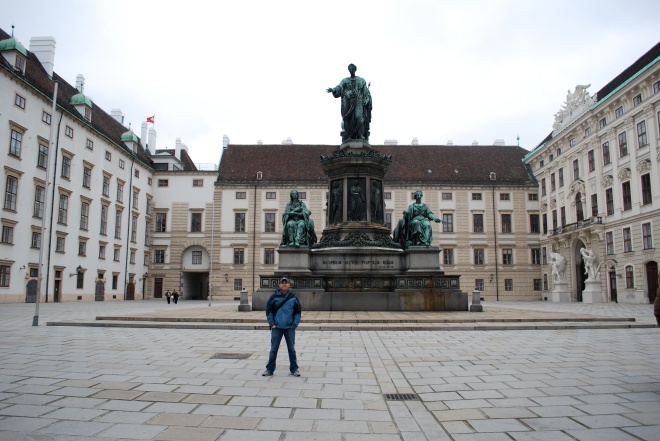Vienna, Austria
We hit the gym, packed up, checked out and stored our bags with the concierge before grabbing breakfast again at Aida and hitting the streets for our last day in Vienna. It was a quick walk to MuseumQuartier, a complex of museums on the site of the former imperial stables that was completed in 2001. We bought MQ Duo tickets, which granted us entrance to the Leopold and MUMOK.

The Leopold houses the impressive former private collection of Rudolf Leopold. It’s a white-limestone building and natural light floods into the rooms — which was great, since the sun made a rare appearance today. My favorite paintings were portraits by Christian Schad, while Charlotte was into the Klimts.

Across the courtyard, standing in marked contrast to the Leopold, is MUMOK, the Museum of Modern Art, housed in a black-basalt box with no windows. There was a solid collection of Joan Miro and Josef Albers, both of which were really cool, as well as an audio and visual 3-D installation by Peter Kogler. In the basement was perhaps the strangest part of MUMOK, with a bizarre exhibit called Mind Expanders. This was performance art — or art that makes you ask: is this really art?


We needed a break and some fresh air so walked over to Bitzinger Wurstelstand, an outdoor food stand, for an order of Kaskrainer, cheese-filled sausage wish mustard, and a Coke Light. Nearby, Oberlaa re-caffeinated us up with cappuccinos and a raspberry and truffle torte.


A visit to Vienna wouldn’t be complete without some time at the Kunsthistorisches Museum, one of the finest art museums in the world. It includes much of the Hapsburg art collection and pieces by Rembrandt, Rubens, Bruegel, Raphael and all those other big shots. My favorite pieces though were the “vegetable” portraits by Guiseppe Arcimboldo.

We returned to the hotel, grabbed our bags and got a taxi to the Westbanhof Station for our OBB train to Budapest that left at 17:50. It was pretty empty, so we got our own cabin and read up on our next destination as we passed through the countryside. The smell of wood-burning fireplaces permeated through our windows as the lights of Budapest drew closer.
A little before 21:00, we disembarked at the Keleti Pu Station and hailed a cab to our final hotel, the Sofitel, on the Pest side of the Danube River. It’s a big black box from the outside, but in the lobby, a retired plane hangs from the courtyard ceiling and a somewhat European trendy vibe resonates.


We booked a Queen Suite, a huge room with a pillow-topped bed, two flatscreen televisions and delicious Hermes products in the bathroom. Another bottle of champagne was a nice touch.

Good job, Hungary.






























